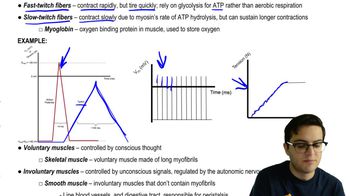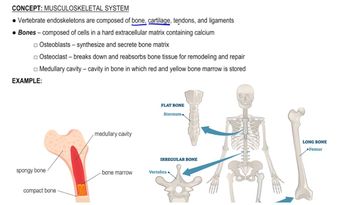Terrestrial Biomes The Earth's major types of ecosystems, such as forests, deserts, and grasslands, are called biomes. Biomes are named for their predominant vegetation or important environmental influences. On land, the distribution of biomes is largely shaped by climate, mainly temperature and rainfall. A climograph is a summary of the climatic conditions shaping various biomes. Let's review the different biomes beginning with deserts. Sparse rainfall that is less than 30 centimeter per year, largely determines that an area will be a desert. Some deserts have soil surface temperatures above 60 degrees Centigrade during the day. Other deserts, such as, those west of the Rocky Mountains and in central Asia, are relatively cold. Evolutionary adaptations of desert plants and animals include a remarkable array of mechanisms that store water. The pleated structure of some cacti enables the plants to expand when they absorb water during wet periods. Some mice never drink, deriving all their water from the metabolic breakdown of the seeds they eat. Many desert plants also rely on CAM photosynthesis, a metabolic adaptation that conserves water in this arid environment. Protective devices that deter feeding by mammals and insects, such as spines on cacti and poisons in the leaves of shrubs, are also common in desert plants. Cone-bearing trees, such as pine, spruce, fir, and hemlock dominate coniferous forests. Coastal coniferous forests of the U.S. Pacific Northwest are actually temperate rain forests. Warm, moist air from the Pacific Ocean supports these unique communities, which like most coniferous forests are dominated by one or a few tree species. Extending in a broad band across northern North America and Eurasia to the southern border of the arctic tundra, the northern coniferous forest, or taiga, is the largest terrestrial biome on Earth. Taiga receives heavy snowfall during winter. The conical shape of many conifers . prevents too much snow from accumulating on and breaking their branches. Coniferous forests are being logged at an alarming rate, and the old-growth stands of these trees may soon disappear Dense stands of deciduous trees are trademarks of temperate broadleaf forests. Temperate broadleaf forests occur throughout mid-latitudes where there is sufficient moisture to support the growth of large trees. More open than rain forests and not as tall, a mature temperate broadleaf forest has distinct vertical layers, including one or two strata of trees, an understory of shrubs, and an herbaceous stratum. Deciduous forest trees drop their leaves before winter, when temperatures are too low for effective photosynthesis and water lost through transpiration is not easily replaced from frozen soil. Many temperate broadleaf forest mammals also enter a dormant winter state called hibernation, and some bird species migrate to warmer climates. Virtually all the original deciduous forests in North America were destroyed by logging and land-clearing for agriculture and urban development. In contrast to drier biomes, these forests tend to recover after disturbance, and today we see deciduous trees dominating undeveloped areas over much of their former range. Tropical rain forests have pronounced vertical stratification. Trees in the canopy make up the topmost stratum. The canopy is often closed, with little light reaching the ground below. When an opening does occur, perhaps because of a fallen tree, other trees and large woody vines grow rapidly, competing for light and space as they fill the gap. Many of the trees are covered with epiphytes, plants that grow on other plants rather than in soil, such as orchids and bromeliads. Rainfall, which is quite variable in the tropics, is the prime determinant of the vegetation growing in an area. In lowland areas that have a prolonged dry season or scarce rainfall at any time, tropical thorn forests predominate. The plants found there are a mixture of thorny shrubs, trees, and succulents. In regions with distinct wet and dry seasons, tropical deciduous forests dominate. Permafrost or permanently frozen subsoil, bitterly cold temperatures, and high winds are responsible for the absence of trees and other tall plants in the arctic tundra. Although the arctic tundra receives very little annual rainfall, water cannot penetrate the underlying permafrost and accumulates in pools on the shallow topsoil during the short summer. Tundra covers expansive areas of the Arctic, amounting to 20 percent of Earth's land surface. High winds and cold temperatures create similar plant communities, called alpine tundra, on very high mountaintops at all latitudes, including the tropics. The veldts of South Africa, the pampas of Argentina and Uruguay, the steppes of Asia, and the plains and prairies of central North America are all temperate grasslands. The key to the persistence of grasslands is seasonal drought, occasional fires, and grazing by large mammals, all of which prevent woody shrubs and trees from becoming established. Temperate grasslands once covered much of central North America. Because grassland soil is both deep and rich in nutrients, these habitats provide fertile land for agriculture. Most grassland in the United States has been converted to farmland, and very little natural prairie exists today.
Table of contents
- 1. Introduction to Biology2h 40m
- 2. Chemistry3h 40m
- 3. Water1h 26m
- 4. Biomolecules2h 23m
- 5. Cell Components2h 26m
- 6. The Membrane2h 31m
- 7. Energy and Metabolism2h 0m
- 8. Respiration2h 40m
- 9. Photosynthesis2h 49m
- 10. Cell Signaling59m
- 11. Cell Division2h 47m
- 12. Meiosis2h 0m
- 13. Mendelian Genetics4h 44m
- Introduction to Mendel's Experiments7m
- Genotype vs. Phenotype17m
- Punnett Squares13m
- Mendel's Experiments26m
- Mendel's Laws18m
- Monohybrid Crosses19m
- Test Crosses14m
- Dihybrid Crosses20m
- Punnett Square Probability26m
- Incomplete Dominance vs. Codominance20m
- Epistasis7m
- Non-Mendelian Genetics12m
- Pedigrees6m
- Autosomal Inheritance21m
- Sex-Linked Inheritance43m
- X-Inactivation9m
- 14. DNA Synthesis2h 27m
- 15. Gene Expression3h 20m
- 16. Regulation of Expression3h 31m
- Introduction to Regulation of Gene Expression13m
- Prokaryotic Gene Regulation via Operons27m
- The Lac Operon21m
- Glucose's Impact on Lac Operon25m
- The Trp Operon20m
- Review of the Lac Operon & Trp Operon11m
- Introduction to Eukaryotic Gene Regulation9m
- Eukaryotic Chromatin Modifications16m
- Eukaryotic Transcriptional Control22m
- Eukaryotic Post-Transcriptional Regulation28m
- Eukaryotic Post-Translational Regulation13m
- 17. Viruses37m
- 18. Biotechnology2h 58m
- 19. Genomics17m
- 20. Development1h 5m
- 21. Evolution3h 1m
- 22. Evolution of Populations3h 52m
- 23. Speciation1h 37m
- 24. History of Life on Earth2h 6m
- 25. Phylogeny2h 31m
- 26. Prokaryotes4h 59m
- 27. Protists1h 12m
- 28. Plants1h 22m
- 29. Fungi36m
- 30. Overview of Animals34m
- 31. Invertebrates1h 2m
- 32. Vertebrates50m
- 33. Plant Anatomy1h 3m
- 34. Vascular Plant Transport2m
- 35. Soil37m
- 36. Plant Reproduction47m
- 37. Plant Sensation and Response1h 9m
- 38. Animal Form and Function1h 19m
- 39. Digestive System10m
- 40. Circulatory System1h 57m
- 41. Immune System1h 12m
- 42. Osmoregulation and Excretion50m
- 43. Endocrine System4m
- 44. Animal Reproduction2m
- 45. Nervous System55m
- 46. Sensory Systems46m
- 47. Muscle Systems23m
- 48. Ecology3h 11m
- Introduction to Ecology20m
- Biogeography14m
- Earth's Climate Patterns50m
- Introduction to Terrestrial Biomes10m
- Terrestrial Biomes: Near Equator13m
- Terrestrial Biomes: Temperate Regions10m
- Terrestrial Biomes: Northern Regions15m
- Introduction to Aquatic Biomes27m
- Freshwater Aquatic Biomes14m
- Marine Aquatic Biomes13m
- 49. Animal Behavior28m
- 50. Population Ecology3h 41m
- Introduction to Population Ecology28m
- Population Sampling Methods23m
- Life History12m
- Population Demography17m
- Factors Limiting Population Growth14m
- Introduction to Population Growth Models22m
- Linear Population Growth6m
- Exponential Population Growth29m
- Logistic Population Growth32m
- r/K Selection10m
- The Human Population22m
- 51. Community Ecology2h 46m
- Introduction to Community Ecology2m
- Introduction to Community Interactions9m
- Community Interactions: Competition (-/-)38m
- Community Interactions: Exploitation (+/-)23m
- Community Interactions: Mutualism (+/+) & Commensalism (+/0)9m
- Community Structure35m
- Community Dynamics26m
- Geographic Impact on Communities21m
- 52. Ecosystems2h 36m
- 53. Conservation Biology24m
47. Muscle Systems
Musculoskeletal System
Video duration:
6mPlay a video:
Related Videos
Related Practice




















































